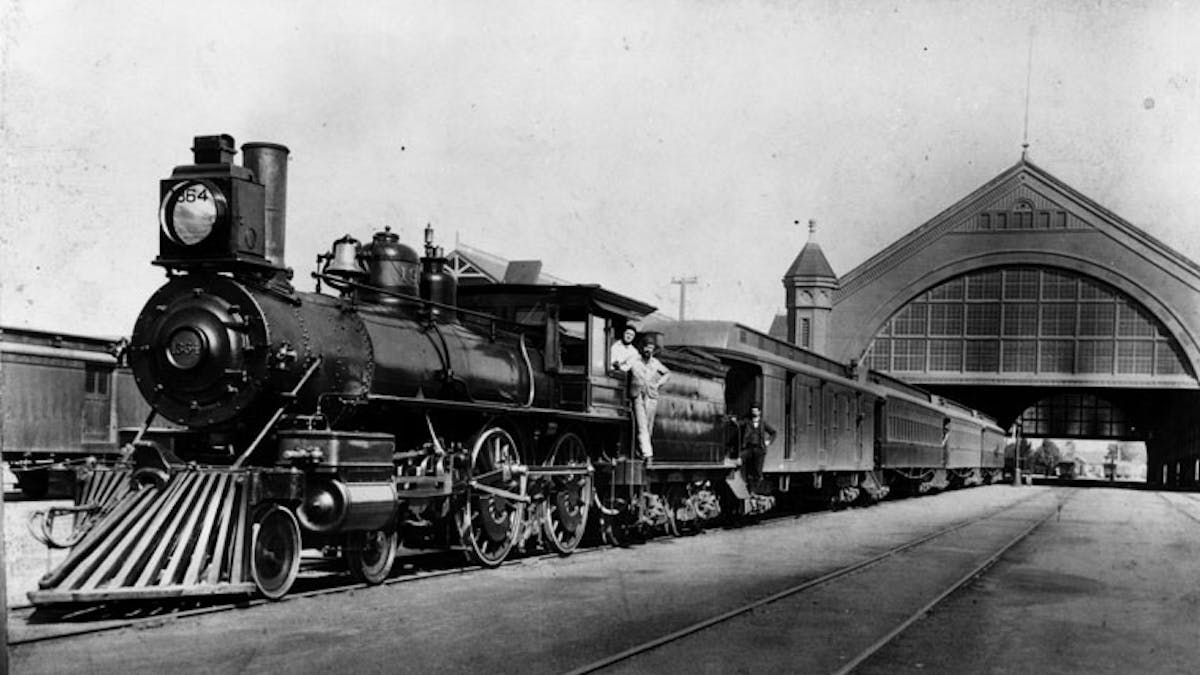Describe Economic Changes Brought About by the Railroads
However the railroads brought the country closer together allowing people to travel faster and view the country in a different light. The cost of traveling and shipping was also much cheaper.

10 Ways The Transcontinental Railroad Changed America History
Describe the changes is.

. It made it easier for mail and goods to travel faster and cheaper. As people moved to the west businesses also expanded westward to meet the. Furthermore in 1883 the railroads helped establish time zones as standard train schedules were becoming commonplace.
For all Americans the Civil War and the postwar era of Reconstruction brought far-reaching economic and social changes. Such hubs became the central nodes in a rapid-transit economy that increasingly spread across the entire continent linking goods and people together in a new national network. Ideological inspiration for economic change brought on by development of capitalism and classical liberalism global nature of trade and productions contributed to proliferation of large-scale transitional businesses that relied of financial instruments.
Describe economic changes brought about by the railroads. Railroads also changed how people purchased goods. A huge industrial power.
Settlement from the East transformed the Great Plains. Dramatic changes in the social and economic structure took place. The transcontinental railroad had a major effect on how Americans perceived their nation and it became a symbol of.
It helped to stimulate the steel industry and it created a huge market that allowed industry to expand by allowing factories to get raw materials from anywhere and to sell their products anywhere. It instilled national confidence. The steel highway improved the lives of millions of city dwellers.
Commemorative of the final spike that completed the transcontinental railroad. Terms in this set 5 Homestead Act. Before railroads people would travel by boat for about 1500.
Land prices rose and more land became available to settlers. The transcontinental railroad helped the economy of the United States grow. Economy is shaped by an understanding of the impact of railroads and more generally the impact of market integration.
The invention of railroads changed Americas economics because it allowed for high volume of goods to be transported. Railroads brought cattle from Texas to Chicago for slaughter where they were then processed into packaged meats and shipped by refrigerated rail to New York City and other eastern cities. The transcontinental railroad helped to make the US.
Describe economic changes brought about by the railroads. While farming was still important new industries were developed. In the late nineteenth century the West developed into a modern agricultural machine--at the expense of farmers.
Economic Changes during Industrial Revolution. In Railroads and American Economic Growth Fogel 1964 transformed the. The cattle industry rose in importance as the railroad provided a practical means for getting the cattle to market.
Railroads were the basis of the nations industrial economy in the late 1800s creating new markets carrying billions of tons of freight to every corner of the country and opening up the West for development. When railroads began their operation the cost drastically reduced to 150. This is the currently selected item.
The huge herds of American bison that roamed the plains were almost wiped out and farmers plowed the natural grasses to plant wheat and other crops. The simple presence of railroads could bring a city economic prosperity. Including railroads steamships telegraphs and canals.
The railroad opened the way for the settlement of the West provided new economic opportunities stimulated the development of town and communities and generally tied the country together. After the Civil War ended the South began to diversify its economy. Describe the economic changes that came about on the western frontier as a result of the expansion of the railroad cattle kingdoms and farming.
Railroads drove the english industry after 1820s railroads spurred industrial growth a cheap way to transport goods created hundreds of new jobs boosted Englands agricultural and fishing industries railroads encouraged country people to take distant city jobs railroads brought rapid and unsettling change to peoples lives. Copper mining developed as new technologies emerged and transportation improved to bring the copper to market. Railroads even helped shape the physical.
As Allan Nevins observed over fifty years ago the period witnessed the emergence of modern America In the victorious North and West these years saw the completion of the national railroad network the creation of the modern steel industry the. Industrial Revolution a term usually applied to the social and economic changes that mark the transition from a stable agricultural and commercial society to a modern industrial society relying on complex machinery rather than tools. By the 1890s the United States was becoming an urban nation and railroads supplied cities and towns with food fuel building materials and access to markets.
Copper mining developed as new technologies emerged and transportation improved to bring the copper to market. Land prices rose and more land became available to settlers. When the railroads were shut down during the great railroad strike of 1894 the true importance of the railroads was fully realized.

10 Ways The Transcontinental Railroad Changed America History

For Tech Giants A Cautionary Tale From 19th Century Railroads On The Limits Of Competition

The Data Driven Economy And The Railroad Age U S Chamber Of Commerce Foundation
No comments for "Describe Economic Changes Brought About by the Railroads"
Post a Comment